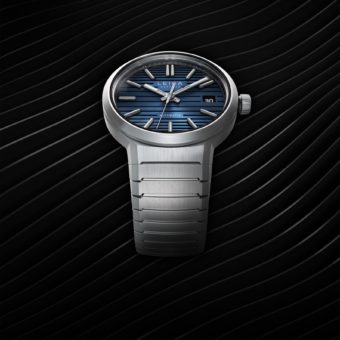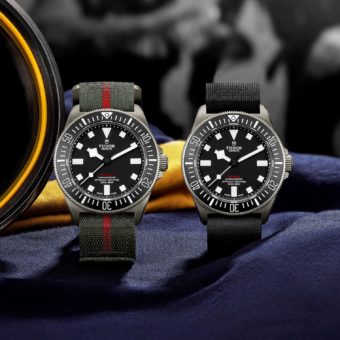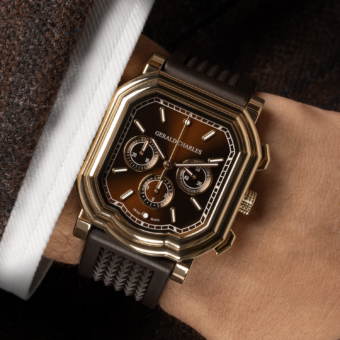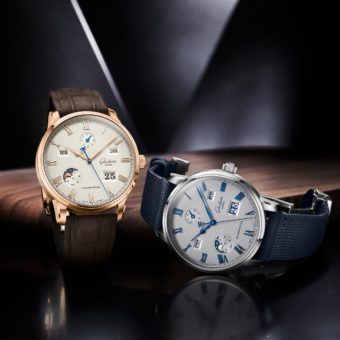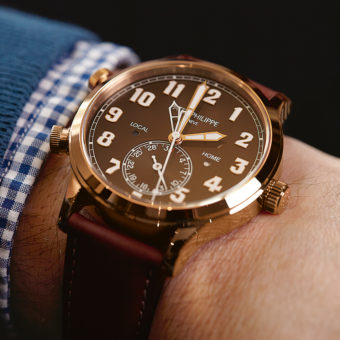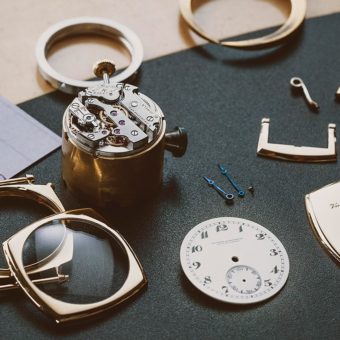MB&F introduced a sportier version of its award-winning Legacy Machine model last year while simultaneously introducing the watch world’s first case made of zirconium. The watch, dubbed by brand founder Max Büsser as the Legacy Machine EVO, returns this year, housed in a slightly more conventional metal — grade 5 titanium — and fronted by a green CVD dial plate.
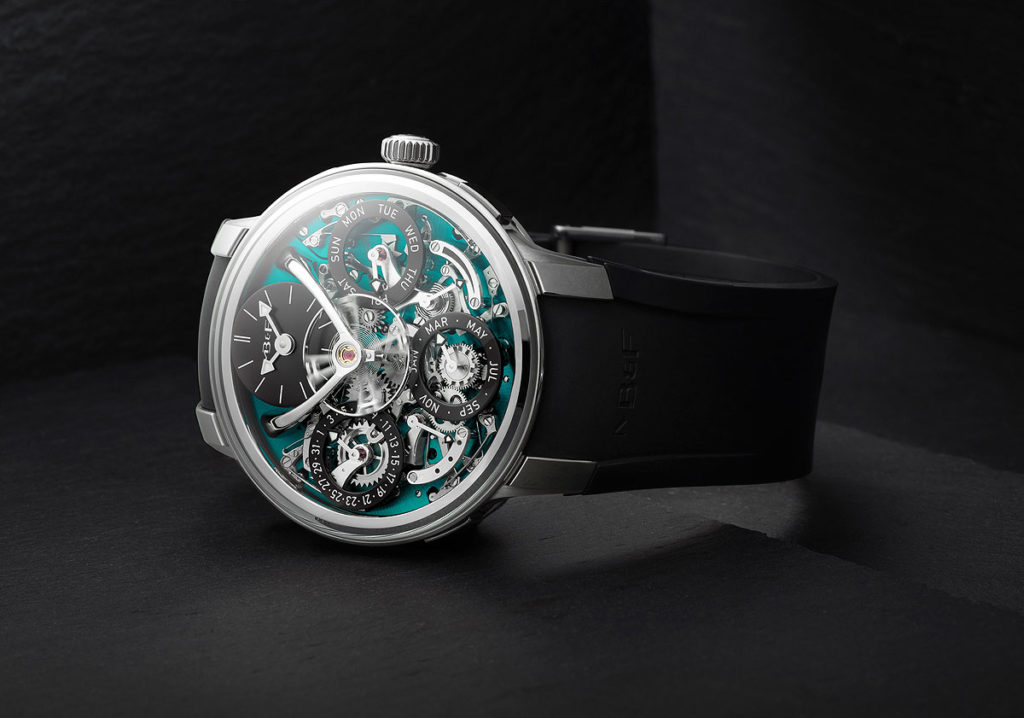
Like its predecessor in zirconium, the LM Perpetual EVO’s 44-mm case is notable for its “no-bezel” construction, which increases the openness of the design and features a domed sapphire crystal fused via thermal bonding directly to the case — a configuration that required substantial redesigning of both elements in order to maintain structural strength while decreasing the height. The pushers for the perpetual calendar adjustments were reworked from their original iterations for tactile comfort and ease of use. The EVO is also the first MB&F watch rated at 80 meters of water resistance, a feat aided by the case’s screw-down crown.
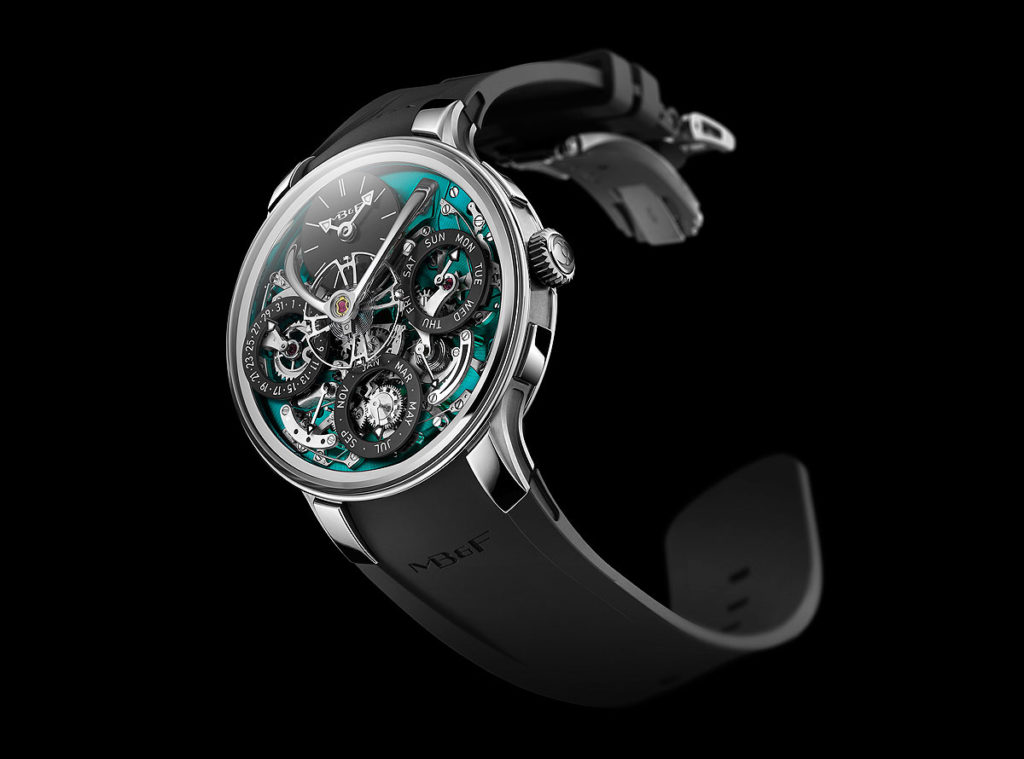
Another novel feature on the EVO versions of the LM Perpetual Calendar is the “FlexRing” annular dampener fitted between the case and the movement, which offers exceptional shock resistance along the vertical and lateral axes. The movement itself, designed and developed in cooperation with Irish independent watchmaker Stephen McDonnell, is built entirely from the ground up — no base caliber, no module — and designed with many of its most visually stunning elements on the dial side, including its large suspended balance. The manually wound, 581-part caliber differs from traditional perpetual calendar movements in a few significant respects. Instead of using a 31-day month as the “default” and fast-forwarding through the unnecessary days in the shorter months, as is the common system, it uses a default 28-day month (i.e., a non-leap-year February) and adds extra days as required, thus no skipping ahead of dates, which has the potential to jam gears. Traditional perpetual calendar mechanisms can also be easily damaged if the owner makes an inadvertent adjustment while the date is changing; in MB&F’s caliber, the adjustment pushers automatically deactivate during calendar changes, so this risk is avoided.

The movement accomplishes these feats with the use of a “mechanical processor” in place of the grand levier (big lever) system more commonplace in perpetual calendar calibers, which also drives the leap-year adjustment by means of a simple quick-set pusher. The huge balance wheel oscillating on the dial side is connected to the escapement in the back via an extra-long balance staff (probably the world’s longest, according to MB&F); under that massive balance are the subdials, which appear to float above the exposed mechanisms beneath them. At 12 o’clock, framed by the arches of the balance bridge, the hours and minutes are displayed on a subdial with Roman numerals and blued hands. Moving clockwise around the dial, the three other skeletonized subdials, mounted on hidden studs, display the day of the week at 3 o’clock, the month at 6 o’clock, and the date at 9 o’clock. At 4 o’clock is an arc-shaped indicator for the watch’s 72-hour power reserve and at 7 o’clock, another indicator for the leap year, equipped with a retrograde hand.

The watch, integrated into a black rubber strap with a titanium folding buckle, the latest member of the EVO family joins the three previous colorways — blue, black, and MB&F’s hallmark “atomic orange” — presented in zirconium cases last year. It carries an MSRP of $176,000.


